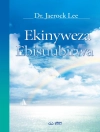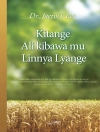The debate about men and women in the church and in marriage continues to cause division among Christians. Most books on this issue are written from a firmly partisan point of view – complementarian or egalitarian. This one is unique.
Andrew Bartlett draws on his theological learning and his skills as a judge and arbitrator to offer an even-handed assessment of the debate. His analysis is thorough but accessible. He engages with advocates of each view and all the key biblical texts, weighing the available evidence and offering fresh insights. He invites the reader to move beyond complementarian and egalitarian labels and seeks progress towards healing the division.
Tabla de materias
Preface xxi
List of abbreviations xxvi
Bible acknowledgments xxix
1. Revising tradition, seeking unity 1
What is this book about? 1
How did these issues become so divisive? 2
The obligation to maintain unity 4
The traditional ‘Christian’ view of a woman’s place 4
Jesus Christ and women 8
Rejection of the traditional view – new terminology 9
The competing stories 11
Methods of interpretation 12
The path ahead 13
Does it really matter? 15
Summary of chapter 1 16
Questions to consider 16
2. Husband and wife, men and women: 1 Corinthians 7 17
Marriage: hierarchy or not? 17
Some recent history of 1 Corinthians 7 18
Threefold relevance of 1 Corinthians 7 20
1. Paul’s end-time perspective: the world in its present form is passing away 20
2. Marital relations and equal authority 22
3. Equality of men and women in personal relations 25
Complementarian acceptance of the significance of
1 Corinthians 7 26
Is Paul an egalitarian? 28
Where next? 29
Summary of chapter 2 29
Questions to consider 30
3. Hierarchies, submission and love: Colossians 3 and
Ephesians 5 31
Three disputed questions 31
Preliminary topics 34
1. Relationship of Colossians and Ephesians 34
2. Submission and hierarchies 34
3. The ideas associated with ‘submitting’ 35
4. When not to submit 38
5. How the marriage relationship was viewed in first-century culture 39
6. Some practical reasons for Paul’s emphases 40
Colossians and the three disputed questions 41
Does comparing the three pairs show Paul’s approval
of a hierarchical view of marriage? 42
Summary of chapter 3 44
Questions to consider 45
4. Marriage portrays the Saviour: Ephesians 5 46
The big picture of Ephesians 5 46
Paul’s kephale metaphor 47
The context and Paul’s use of kephalē 50
1. Paul’s use of apposition in verse 23 51
2. The theme of saviourhood in verses 25-33 54
3. Paul’s use of Genesis 55
4. The first word of verse 24 56
The first question: unilateral authority of the husband? 58
The second question: one-way or mutual submission? 60
The third question: does Paul differentiate the responsibilities
of husbands and wives? 62
The beauty of Paul’s vision of marriage 64
Leadership of the household? 65
Summary of chapter 4 66
Questions to consider 67
5. Creation and life: Genesis 1 – 3 and beyond 69
Man and woman in Genesis 69
Narrative structure 71
Male rule in Genesis 1 – 3 72
Genesis 1 – 2 and authoritative headship? 73
Genesis 3 and authoritative headship? 77
What does it mean to be male or female? 81
Differentiation of man and woman 82
Marriage in the Old Testament 85
Who should protect and provide? 86
What if Genesis 2 – 3 teaches authoritative male headship? 89
Women’s leadership and authority in the Old Testament 91
Summary of chapter 5 95
Questions to consider 96
6. Submission and honour: 1 Peter 97
Peter’s focus 97
Peter’s theme 98
Submission and honour in wider society 98
Submission: hierarchical or mutual? 99
Instructions to wives in 3:1-6 100
Is Peter supporting a hierarchical view of marriage? 102
Peter’s instructions to husbands 103
Translation issues and Peter’s three points for husbands 105
The example of Sarah and Abraham 109
Dangers of coercive power 111
Submission and leadership 113
Summary of chapter 6 114
Questions to consider 114
7. Veiled meanings? 1 Corinthians 11 115
The thickets surrounding 1 Corinthians 11:2-16 115
The first thicket: the doctrine of the Trinity 116
The second thicket: unjustified conclusions from word studies 117
Grudem’s word studies 118
Metaphorical meaning is not determined by usage elsewhere but by context 120
The question mark over verses 34-35 181
Text criticism 182
Introduction 182
Principles to apply 183
Marginal glosses and additions 185
Families of manuscripts 186
Were verses 34-35 added to what Paul himself wrote? 186
The intrinsic evidence 186
Assessing the external evidence 188
Variation in the position of verses 34-35: four explanations
to consider 188
Examining explanations 1 and 2: moved down or moved up? 190
Examining explanations 3 and 4: afterthought or addition? 192
Relevance of intrinsic evidence to explanations 3 and 4 193
On the available evidence, which explanation is the most probable? 196
But what about the absence of extant manuscripts which wholly
lack verses 34-35? 197
Codex Fuldensis 197
Codex Vaticanus 201
Concluding assessment 202
Summary of chapter 10 203
Questions to consider 204
11. Teaching and 1 Timothy 2: difficulties 205
The centre of the storm 205
The nature of the disagreement 206
The rival limitations 208
Paul’s main concern 209
Paul’s concept of teaching 210
General contents of the letter 211
Introducing the false teachings and false teachers 213
Difficulties for all 214
Some difficulties for egalitarian interpretations 217
Some difficulties for complementarian interpretations 220
1. Why only ‘I am not permitting’? 220
2. Exclusively male leadership? 223
3. Authoritative teaching as a special category? 224
4. A creation principle? 227
Making a fresh start 230
1 Timothy 2 and the public assemblies of the church 231
Summary of chapter 11 235
Questions to consider 237
12. Teaching and 1 Timothy 2: contextual keys 238
Opening the doors into 1 Timothy 2 238
The historical context 239
Four contextual keys 243
The basis of the second key 244
Using the first key: reading 2:9-10 in the context of 1:1 – 2:8 245
Using the second key to aid understanding of 2:9-10 248
Using the first key again: reading 2:11-12 in context 249
Using the second key to aid understanding of 2:11-12 251
The wealthy women as false teachers 258
Summary of chapter 12 263
Questions to consider 264
13. Teaching and 1 Timothy 2: Paul’s reasoning 265
Using the third key: the meaning of authenteō from the context,
including Paul’s reasoning in 2:13–14 265
Why does Paul use the rare word authenteō? 268
Understanding verse 15 270
Using the fourth key: Paul’s signposts in verse 15 273
The link to chapter 3 275
What if I am wrong about the nature of the false teaching? 277
Reassessing current interpretations of 1 Timothy 2 277
The four tough questions 281
But isn’t this interpretation entirely new? 282
Practical consequences of how verse 12 is understood 283
Summary of chapter 13 285
Questions to consider 286
14. Women church leaders? A biblical survey 287
Should church leadership by women be restricted? 287
Pillar 1: 1 Corinthians 14:34-35 288
Pillar 2: 1 Timothy 2:11-15 288
Pillar 3: twelve male apostles 289
Pillar 4: Old Testament priests and teaching 291
Pillar 5: headship 292
Setting the scene for considering pillar 6 293
The distinction between governing and teaching 294
Women’s prominence in the young churches 295
The openness of the New Testament evidence on whether women
served as elders 306
What would be assumed about whether women could be elders? 309
Summary of chapter 14 313
Questions to consider 314
15. Women elders? 1 Timothy 3 315
Qualifications for elders 315
Do Paul’s requirements include or exclude women? 316
Conclusion on women’s eldership 327
Elders as guardians 328
Women as leaders 332
Postscript to chapters 11 to 15: a threefold test 333
Summary of chapter 15 336
Questions to consider 337
16. Taking stock and moving closer together 338
Pulling some threads together 338
Where we have arrived 339
Wider themes 340
1. The paradox of equality and humility 340
2. Creation and new creation 341
3. What it means to be male or female 343
4. Raising expectations of Scripture 343
The importance of the divine mandate of unity 344
The obstacles to unity 344
Ongoing disagreements on interpretation of Scripture 345
Egalitarian misunderstanding of the nature and motivations of the debate 348
How complementarians characterize the debate 349
Re-framing the debate 351
Next steps 355
Summary of chapter 16 356
Questions to consider 357
Appendix 1: methods of biblical interpretation 359
The interpretation toolbox 359
1. Primacy of Scripture over tradition 359
2. Paying appropriate attention to culture 360
3. Going back to the source language in context 361
4. Coherence 363
5. A Christ-centred canonical approach 363
6. Spiritual openness 364
7. Practical wisdom 365
Application 365
Feeling the impact of culture: a thought experiment 366
Appendix 2: additional arguments deployed against mutual
submission 368
Appendix 3: uses of authenteō in other writings 372
Appendix 4: the structure of 1 Timothy 2:12 376
The scholarly discussions 376
Payne’s thesis 377
Köstenberger’s thesis 377
Assessments 378
Conclusion 381
Appendix 5: interpretations of 1 Timothy 2:15 382
Appendix 6: shortcomings in complementarian analyses
of 1 Timothy 2 386
Appendix 7: taking stock of translation issues 392
References 395
Index of names 405
Index of Scripture references 413
Index of sources before 1900 429
Sobre el autor
Andrew Bartlett QC is based in London and is a highly rated international arbitrator with a wide range of experience in dispute resolution in numerous locations. He has a BA in Theology (University of Gloucestershire) and has served as an elder and a churchwarden in various churches.







![Portada de Brian Schrag & Julisa Rowe: Community Arts for God's Purposes [Chinese] 貼近神心意的社群藝術 Portada de Brian Schrag & Julisa Rowe: Community Arts for God's Purposes [Chinese] 貼近神心意的社群藝術](https://static.worldofdigitals.com/thumb_webp/740/9781645083740.webp)




